
![]()
Learn More About Building Science
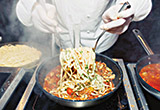 Kitchens and the dining areas occupy the same spaces, yet have very different, often conflicting, heat and cooling needs, ventilation rates, and moisture generation not to mention occupancy patterns and lighting objectives. Anything that changes air, heat, or moisture dynamics, such as adding insulation, replacing exhaust hoods, or installing a new HVAC system, call for a building science evaluation to safe guard occupant health, building durability, and comfort. Considerations are summarized on our Commercial Buildings Priorities page.
Kitchens and the dining areas occupy the same spaces, yet have very different, often conflicting, heat and cooling needs, ventilation rates, and moisture generation not to mention occupancy patterns and lighting objectives. Anything that changes air, heat, or moisture dynamics, such as adding insulation, replacing exhaust hoods, or installing a new HVAC system, call for a building science evaluation to safe guard occupant health, building durability, and comfort. Considerations are summarized on our Commercial Buildings Priorities page.
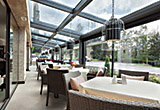 An understanding of basic building science will illuminate the unseen life of restaurant buildings where uncontrolled air flow is the driving force behind many common problems. For example, check out the building science forces behind these common restaurant issues:
An understanding of basic building science will illuminate the unseen life of restaurant buildings where uncontrolled air flow is the driving force behind many common problems. For example, check out the building science forces behind these common restaurant issues:
| Condensation on duct work, warped ceiling tiles |
Mildew and mold around doors of walk-ins |
Exterior doors hard to open |
|---|---|---|
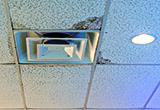 |
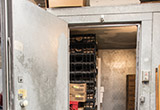 |
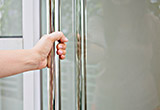 |
| Driving force: Warm ceiling cavity air meets exposed AC duct surfaces.
Strategy: Repair by specifying assembly and sealing of replacement duct assembly, set a duct leakage limit, follow up with duct testing, contractor payment contingent on test results. |
Driving force: Cold air seeps past compromised door gasket, warm kitchen air condenses or raises surface humidity to levels needed for growth.
Strategy: Replace gasket, reduce kitchen relative humidity by recommissioning the ventilation system. |
Driving force: Unbalanced air flows into and out of the building.
Strategy: Air flow testing and repair of uncontrolled air flow through leaky duct work and building cavities. Evaluate, service and recommission make up air, exhaust, heating, and cooling equipment. |
The Survey Says:
A recent survey conducted at the Restaurant Facility Management Association conference asked:
“How often do the following challenges occur in each restaurant you manage?”



Take the survey to give us your take on building science challenges in your restaurants: http://ucf.qualtrics.com/jfe/form/SV_9YaFprYj2CFWxNz
Restaurant Facility Managers
Are you sure you are utilizing the best products and procedures in your facilities?
Do you have questions as to why some problems are happening in some of your restaurants but not in others?
Are product vendors indicating great energy savings from a device and you are skeptical?
Do you wish you had a facility detective to answer some of your questions that you are too busy to address?
If you answered yes to any of these questions then perhaps we can help.
We are building scientists. We evaluate buildings and technologies to discover situations that can lead to problems such as incomplete combustion gas venting (spillage, backdrafting and flame roll-out), sewer or musty odors, condensation, mold growth, thermal discomfort, and wasted energy. We would like to help you.
There are two methods we can use to help restaurant facility managers. One is by direct contract to help solve a problem or evaluate a specific measure of interest. Be assured that we have experience working with confidential agreements to help protect the reputation of your businesses. The second method is for you to join other restaurant managers in our Restaurant Research Collaborative where your contribution can be multiplied for shared benefit. For an annual fee, you become part of the board directing the research our staff undertakes.
Assistance can be obtained through various means such as energy and indoor environment simulation of different scenarios to determine the most cost-effective solutions, analysis of operational procedures and processes, brief site inspection, or on-site measurements and analysis of specific measures.
Our full-time research team has conducted research for the U.S Department of Energy, National Labs, Department of Defense, state and local governments and many building owners including those of restaurants. The team members have diagnosed issues and analyzed savings based on observations and measurements, sometimes applying building science principals to resolve issues that other professionals could not diagnose. Our research team can often be extremely cost effective by offering low-cost solutions whereas others may suggest replacing entire HVAC systems.
Our team at the University of Central Florida’s energy research institute FSEC has no financial interest in selling you anything but good results and advice. If you are interested in learning more or joining our Restaurant Research Collaborative, please contact our Buildings Research Director, Rob Vieira.
|
We Want to Hear From You!
|
|
Learn More About Building Science
|
|
Getting Started with ENERGY STAR® |



